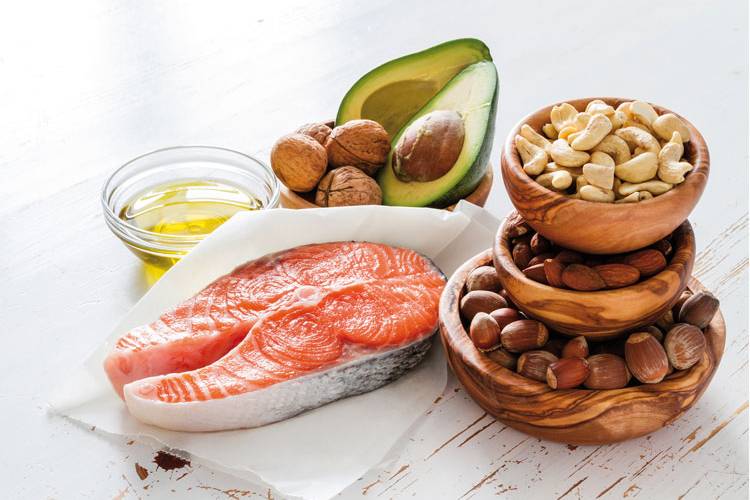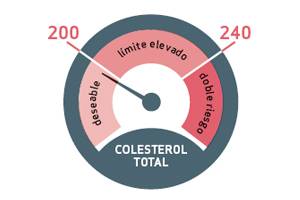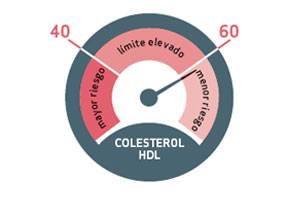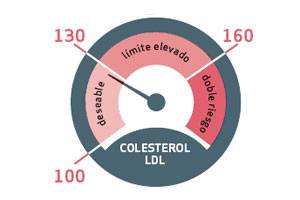Say goodbye to cholesterol
Fats, despite their bad reputation, represent a varied group of substances which have in common their insolubility in water. They have several functions in the organism, from forming cell membranes to improving the functioning of fat-soluble vitamins (which are only dissolved in fat). Also, they are the most concentrated source of energy and provide approximately 9 kcal/g.
on today's menu
Share

We propose a menu to control your cholesterol.
However not all fats are the same, and differ by their form, function and foods in which they are found. The cholesterol which is usually associated with negative aspects is the chemical antecedent of several hormones and biliary salts; it is produced in the liver and also enters the body through foods of animal origin.
TYPES OS CHOLESTEROL

TOTAL CHOLESTEROL
The sum of both cholesterols. High blood cholesterol (hypercholesterolemia) indicates a higher risk of a heart attack and/or stroke. For this reason it is important to monitor cholesterol levels and analyse results.

HDL CHOLESTEROL “GOOD”
LDL Cholesterol LDL (Low-Density Lipoprotein, or bad cholesterol): this accumulates on artery walls, which can lead to obstructing them and preventing correct blood circulation; it is therefore dangerous and must be controlled..

LDL CHOLESTEROL “BAD”
LDL Cholesterol LDL (Low-Density Lipoprotein, or bad cholesterol): this accumulates on artery walls, which can lead to obstructing them and preventing correct blood circulation; it is therefore dangerous and must be controlled.
CHOLESTEROL FOR EACH DAY
The Spanish Medical Association of Primary Health Care estimates that 50% to 69% of the Spanish population suffers from hypercholesterolemia and in the majority of cases, their control is deficient.
According to the Guide for managing dyslipidaemia (alteration of lipid levels in the blood, essentially cholesterol and triglycerides) by the Work Group of the European Cardiology Society and the European Atherosclerosis Society, there is enough evidence to prove that reducing total and ‘bad’ cholesterol can prevent the apparition of cardiovascular diseases. Changing concentration levels, both of total and ‘good’ cholesterol, is achieved by selecting types of fat and controlling simple sugar intakes (the excess consumption of which is associated to a reduction in HDL) in the diet.

As for fats, saturated fatty acids (meat, dairy products, etc.) have the biggest impact on the increase of ‘bad’ cholesterol levels. Trans-fatty acids of industrial origin (found in sweets, biscuits, ice cream, margarine, popcorn, industrial bakery products, sauces, precooked products), quantitatively have the same effect on LDL cholesterol as saturated fats an also reduce HDL cholesterol.
Their average consumption in European countries is 2-5% of the total energy intake. Additionally, the total quantity of fats in the diet should represent between 25-30% of total calories. For people with hypercholesterolemia, the consumption of saturated fats should be under 7%. The rest of fat must be provided through:
• 13-18% monounsaturated fatty acids (olive oil): these increase HDL cholesterol (good) and reduce LDL (bad) cholesterol.
• 7-10% polyunsaturated fatty acids: these reduce LDL cholesterol but also HDL. These come from:
• Omega 6: seed oil (sunflower, soy, corn)
• Omega 3: fish (salmon, anchovies, sardines, herring, mackerel), tofu, walnuts, linseed, walnut and colza oils.
Given that many studies suggest that a moderate intake of cholesterol in the diet does not have negative effects on controlling cholesterol, European guidelines set the recommended dietary intake of cholesterol at 300 mg per day.

Menu to say goodbye to cholesterol
Discover it!
Menu to say goodbye to cholesterol







